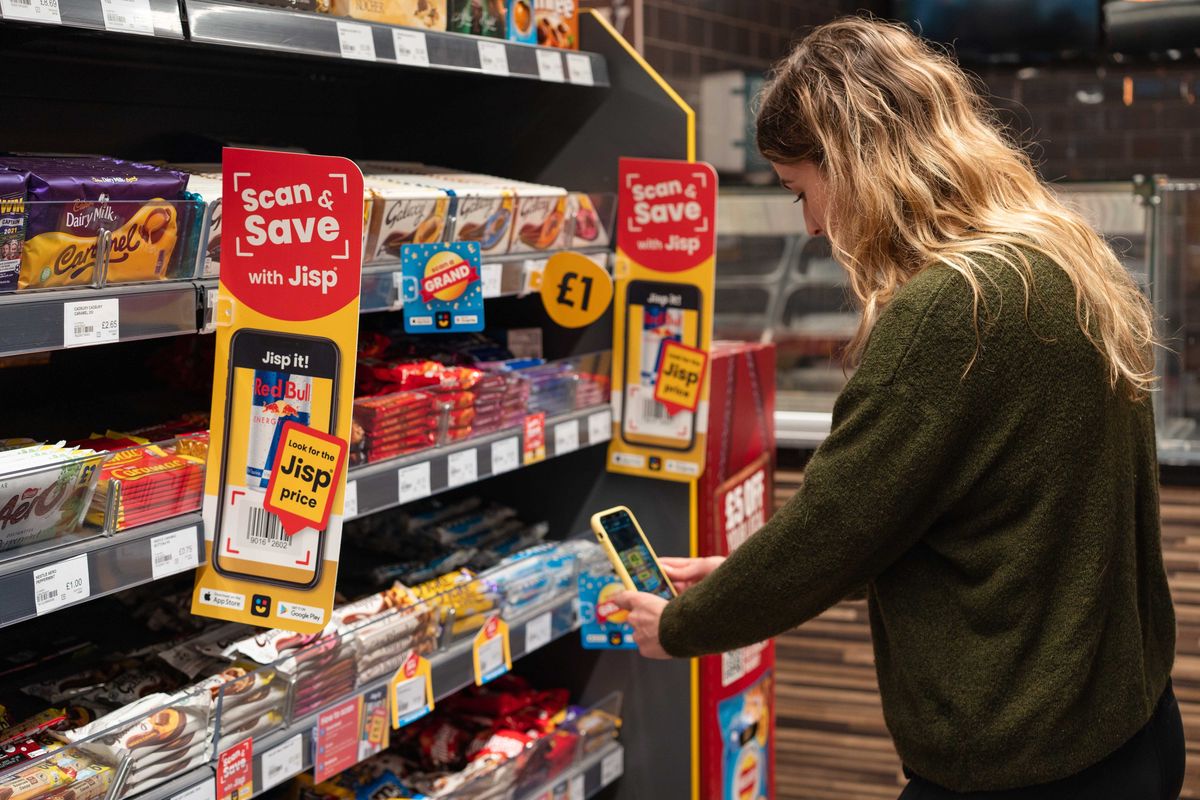The profile and complexion of the independent channel has transformed beyond all recognition in recent years, and especially since lockdown, when small neighbourhood stores became the beating hearts of their communities and discovered the range of services and conveniences that could be housed in and supplied by a single shop.
From banking facilities and postal services, click and collect and online ordering, to delivery of groceries, and ordering of food to go – the list is potentially endless – the local store is now the Swiss Army knife of retail, making itself ever-more vital to its customers, and effectively challenging supermarkets, town centres and malls.
Home delivery: expanding boundaries
The surging consumer demand for on-demand delivery services is making a fundamental transformation in the convenience retail market. With 80 per cent of customers now wanting same-day or on-demand delivery, and 75 per cent of on-demand grocery shoppers expecting it to become part of their daily lives, independent convenience retailers are rapidly adapting to meet these evolving expectations.
The shift represents more than just a new sales channel – it's a complete reimagining of how convenience stores connect with their communities. From extending customer reach beyond traditional footfall to gathering valuable data insights, delivery services are enabling retailers to compete more effectively with larger chains whilst maintaining their unique local character.
The most immediate benefit of implementing a delivery service is the ability to reach customers well beyond the traditional catchment area. “Offering home delivery allows retailers to extend their customer base beyond foot traffic by making their business accessible to customers outside their immediate area,” explains a Snappy Shopper spokesperson. “Through Snappy Shopper, local convenience stores can tap into online demand and reach customers in surrounding areas, including rural or less accessible locations, or those who might not visit in person.”
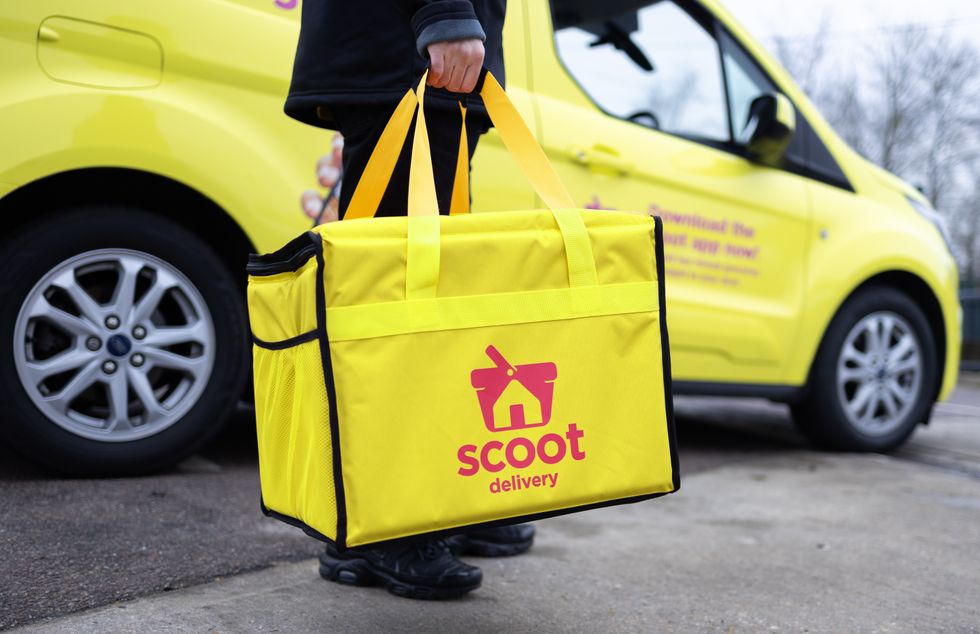
This expansion isn't limited to geographical boundaries. Colm Johnson, Booker's Retail Managing Director, notes that modern shoppers are no longer constrained by proximity when seeking convenience. “Many shoppers are no longer limited to their local shop when looking for convenience; instead, they can turn to digital platforms to find what they need. Whether commuting, working remotely, or visiting a new area, customers will often choose a retailer that offers speed, reliability, and an attractive product range – even if it's two or three miles away.”
With Booker’s new offering, Scoot, convenience retailers can serve these non-local customers by appearing in app listings and geo-targeted searches, putting them in front of a much wider audience, Johnson adds.
The digital visibility that comes with delivery platforms amplifies this reach exponentially. Platforms integrate with social media and marketing tools, helping customers discover stores they might not otherwise find. This digital presence enables retailers to capture spontaneous and top-up purchases, expanding beyond traditional in-store behaviour patterns.
Meeting modern expectations
Today's convenience shoppers have clear expectations when it comes to delivery services, centred around three key pillars: speed, accuracy, and communication. “Customers expect honesty, and therefore in the context of delivery service, transparency and accuracy. Retailers on Snappy Shopper commit to 30 to 60 minutes – a commitment that is consistently met or beaten,” says the Snappy Shopper spokesperson.
Johnson emphasises that today's convenience shopper expects a seamless experience. “That means rapid delivery alongside accuracy in fulfilling orders and clear, real-time communication. Customers want to be kept informed from the moment they place their order to the moment it arrives. Reliability is critical, especially when it comes to essentials or fresh produce.”
Accuracy proves equally crucial in building customer trust. Customers want to receive exactly what they ordered, with minimal substitutions or errors. This requirement has driven platforms to develop sophisticated solutions, including real-time stock updates and EPOS integrations that ensure product availability matches what's displayed online.
Clear communication throughout the delivery process builds trust and reinforces reliability. Features like live order tracking keep customers informed from checkout to doorstep, creating transparency that independent retailers can leverage to differentiate themselves from larger competitors.
Preserving brand identity
One of the primary concerns for independent retailers considering third-party delivery platforms is maintaining their unique brand identity and customer service standards. However, leading platforms are addressing this challenge through various strategies that keep the retailer at the forefront of the customer experience.
“Retailers can maintain their brand identity and service standards on third-party delivery platforms by leveraging several proven strategies,” explains the Snappy Shopper spokesperson. “Self-delivery is a key option, allowing retailers to manage customer interactions directly and uphold service quality from store to doorstep.”
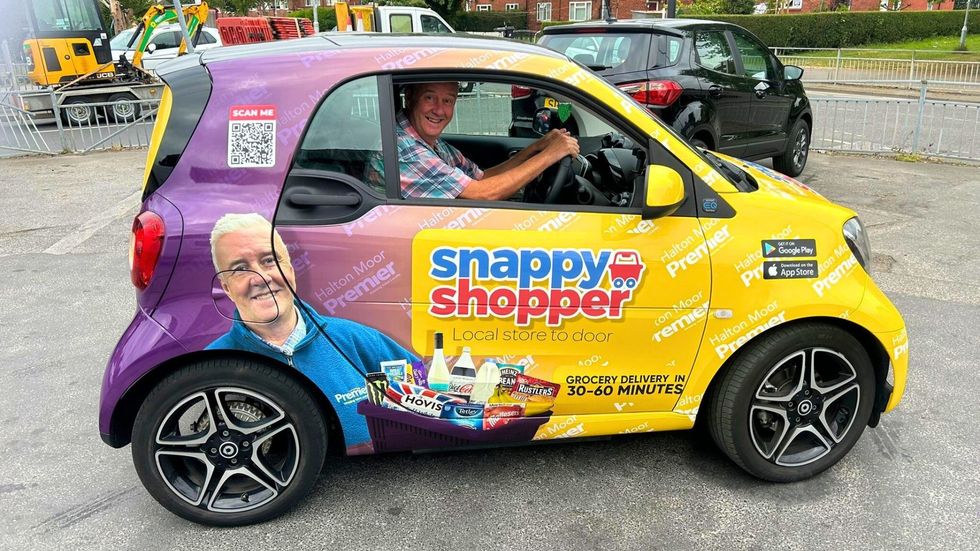
Physical branding elements play a crucial role in this strategy. Brand visibility can be reinforced through co-branded elements like branded delivery vehicle wraps, point-of-sale materials, and flyers, ensuring customers associate the experience with the retailer rather than just the platform.
Johnson confirms that Booker's Scoot platform gives retailers full control over pricing, product selection, and delivery policies. “Booker also supports retailers with branded assets, from vehicle wraps to in-store POS materials, which ensures the delivery service is an extension of the store's unique identity – not a replacement. Customers who receive a Scoot delivery will still associate the experience with the store itself, reinforcing trust and loyalty.”
For retailers with strong digital identities, Snappy Shopper suggests their white-label solutions, offering even greater control, “allowing them to own the customer journey from browsing to delivery tracking, all within their own branded environment.”
Marketing support
The success of any delivery service depends heavily on local awareness and adoption. Recognising this, platform providers are offering comprehensive marketing support packages designed to help retailers promote their services effectively within their communities.
“Snappy Shopper provides retailers with a comprehensive suite of marketing support to help promote their delivery service within the local community,” says the spokesperson. “This includes centrally run campaigns, hyperlocal RGM (Regional Growth Manager) support, tailored social media resources, hands-on marketing partnerships, and in-store POS materials – all designed to drive awareness and engage local communities, ultimately driving sales and building lasting customer relationships.”
The practical value of this support is evident in retailer testimonials. Ricky from Best-One Avondale explains: “The support package from Snappy Shopper was a big reason we chose Snappy Shopper. From first-time customer codes to vehicle wraps, they helped with advice, funding and growth every step of the way.”
Similarly, Scoot supports retailers with geo-targeted digital marketing campaigns, social media assets, and in-app promotional tools that help stores stand out. There's also support with launch-day activity, seasonal promotions, and the creation of exclusive offers that reward app engagement, including the “Star Deal” promotion.
Tailored solutions
As independent retailers face different challenges than large chains, these solutions are specifically designed for smaller operations. These focus on affordability, flexibility, and local markets rather than national scale.
“Snappy Shopper is purpose-built to meet the unique needs of independent convenience retailers, differentiating its approach from that taken with larger chains,” explains the spokesperson. The platform works closely with independent retailers through dedicated product focus groups and feedback channels, with a specialised Product Stream focusing specifically on the needs of independent stores.
The technology infrastructure recognises the resource constraints of smaller operations. “Snappy Shopper's technology is built to be as powerful as that used by larger chains but is adapted for ease of use by independents. This includes seamless EPOS integrations, wholesaler engagement and Snappy Rewards – an in-house loyalty programme.”
Johnson also stresses that Scoot has been built with independent retailers in mind. “Larger chains have national brand recognition, but independent retailers often need solutions that are low-cost, flexible, and tailored to local customer bases.” The platform's charging structure reflects this understanding, with a one-time set-up fee and a low commission rate that can be refunded if sales through the app reach a certain threshold each month.
Data-driven decision-making
One of the most valuable aspects of digital delivery platforms is their ability to provide retailers with detailed insights into customer behaviour and preferences. This data enables more informed decision-making across all aspects of the business.
“Snappy Shopper's Retailer Dashboard, supported by dedicated RGMs, gives independent retailers easy-to-understand, real-time data on customer behaviour, order patterns and sales performance,” explains the spokesperson. “By leveraging data analytics and the Snappy Shopper platform, retailers can personalise marketing efforts, like tailored offers and loyalty rewards, to better meet customer needs.”
Johnson notes that understanding customer behaviour is essential for driving repeat business. “With Scoot, retailers can access detailed data on order trends, best-selling items, and peak delivery times. This insight helps stores refine their stock management, create more relevant promotions, and adjust delivery times to suit local demand.”
The data proves particularly valuable for understanding non-local customer patterns, enabling retailers to identify and cater for behaviours such as frequent hot food orders during weekday lunch hours or larger weekend orders.
The success stories emerging from early adopters demonstrate the transformative potential of delivery services. Kal's Budgens in Sheffield launched its Snappy Shopper delivery service and within five months saw delivery account for 20 per cent of the store's total income, while maintaining in-store sales. Kal credits the platform's user-friendly interface, dedicated support, and customer acquisition strategies for the rapid growth, stating: “We were able to deploy a brilliant customer acquisition strategy that catapulted our delivery service, I couldn't have done it on my own.”
Similarly impressive results are being achieved across the network. Swaran Mini Market in Doncaster partnered with Snappy Shopper during the pandemic and has continued to grow its delivery revenue, which now adds an additional 25 per cent to the store's overall sales. Meanwhile, Girish's Premier Store in Glasgow has achieved remarkable growth, with weekly delivery revenue reaching up to £13,000.
The Sheffield launch of Scoot across three Premier stores demonstrates the platform's effectiveness. Mandeep, Bal, and Vrinder Singh, owners of the participating Premier stores, said: “We're thrilled to introduce Scoot into our stores. The service has already boosted our delivery sales, and our customers are excited about the convenience it provides. The support from the Scoot team has been excellent, and we're proud to offer this new service to our community.”
Industry-wide innovation
Major industry players are launching initiatives designed to democratise access to delivery services for independent retailers. Co-op's launch of Peckish, a rapid delivery grocery app specifically designed for independent retailers, represents a significant development in this space.
The £1 million investment in Peckish aims to enable independent grocery businesses to provide an online grocery shopping and delivery service to their local customers. The app overcomes traditional barriers that independent retailers face when moving online, including cost, scale, and resource constraints.
Just Eat just last month announced the full UK launch of its delivery-as-a-service platform, JET Go, which will enable independent retailers to receive customer orders through their own channels while tapping into Just Eat’s technology infrastructure and network of independent couriers to offer on-demand, same-day and scheduled deliveries.
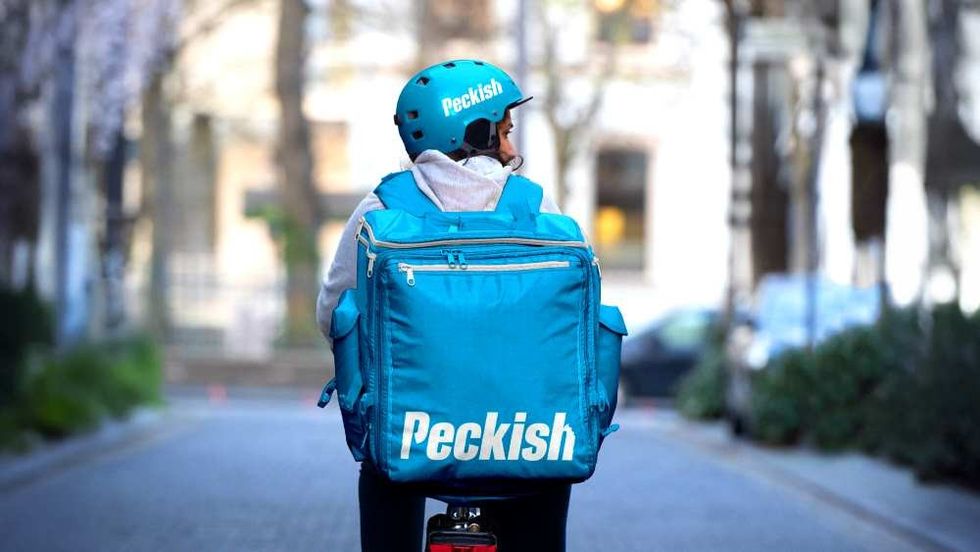
As the official launch partner for JET Go, Co-op has rolled out the service across hundreds of stores, and JET Go will also fulfil deliveries on Peckish.
“JET Go is not only a powerful solution for major retailers, but also a game-changer for smaller high street businesses looking to offer on-demand delivery with full brand control while retaining control of the customer experience,” said Matt Ephgrave, managing director of Just Eat for Business.
The transformation of UK convenience retail through delivery services represents more than a temporary trend – it's a fundamental shift in how these businesses operate and serve their communities. “Snappy Shopper was founded to empower independent convenience retailers and today supports more than one thousand stores across the UK offering home delivery through its technology,” notes the spokesperson. “Over one hundred independent convenience retailers on the Snappy Shopper platform have grossed more than £1M in merchandise value to date.”
The success of these initiatives suggests that delivery services will become an essential component of convenience retail operations rather than an optional add-on. As consumer expectations continue to evolve and digital adoption accelerates, retailers who embrace these technologies early will be best positioned to thrive in an increasingly competitive marketplace.
One-stop payment services
Whilst delivery services are transforming how customers shop for convenience items, the physical store remains crucial for providing essential services that customers cannot easily access online. The concept of the “Swiss Army Knife” store – offering multiple convenient services under one roof – has become increasingly important as retailers seek to differentiate themselves and drive footfall.
“Convenience is often recognised as one of the most important attributes amongst customers, and retailers who offer our full range of in-store services are often viewed as a 'one-stop shop',” explains Anthony Sappor, Retail Proposition & Partnerships Director at PayPoint.
“Our in-store services are designed to easily embed into retailers' existing operations and enhance their service offerings. This means that when customers visit their local retailer to buy their favourite chocolate bar, newspaper or weekly scratchcard, they can also purchase mobile top-ups, send and receive parcels, purchase gift cards and pay household bills in a singular trip.”
The integration of multiple services creates a powerful synergy that benefits both retailers and customers. Sappor notes that “an increase in the range of in-store services positively correlates with the likelihood of customers making other in-store purchases and boosting footfall from customers passing by.”
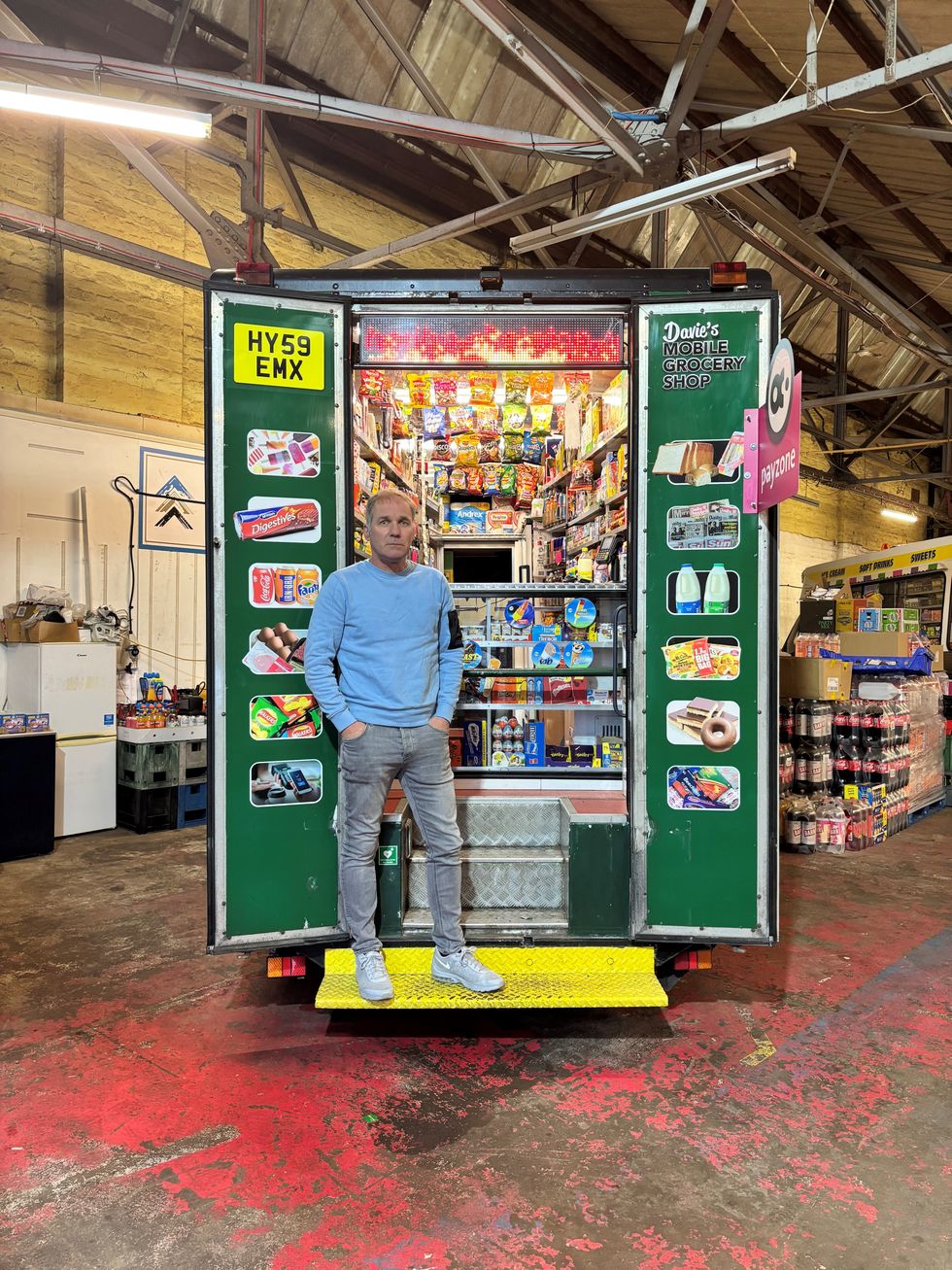
Simon Lambert, Commercial and Operations Director at Payzone, emphasises the community-building aspect of these services. “Payzone is a practical alternative for people who prefer to use cash rather than make online payments, make direct debits, or digital purchase things like tickets, mobile top-ups, and gift vouchers digitally – it means that people who like to pay in cash can still do so,” he explains.
“Customers can settle their bills at the same time as shopping for groceries – it's great for ease of payment and local convenience. But it's not just about simplifying bill payments, it also strengthens community ties as it effectively turns retailers into local hubs, attracting more people into the store, and encouraging additional grocery purchases, ultimately benefiting businesses and shoppers alike.”
Sappor acknowledges the pressures facing independent retailers: “From increased living costs to navigating market competition, we understand the challenges our retailer partners and their customers are currently facing. While larger chains can feel like a dominant force, independent retailers should leverage their local knowledge and ability to create a community feel to stand out from larger retailers. This includes maintaining services like counter cash and energy top-ups that continue to be vital to some demographics that many larger retailers are scaling back on.”
The practical considerations of small-store operations are addressed through innovative hardware solutions. “Payzone offers a compact, all-in-one terminal that fits easily into limited counter space,” explains Lambert. “The device is similar in size to traditional card payment terminals and can scan bills, accept key cards, and gas cards, and process card payments. It's portable which allows retailers to move it around the store, which is especially useful for stores with multiple counters.”
Support networks
The success of in-store service integration depends heavily on ongoing support and training. Service providers are investing in dedicated teams to ensure retailers can maximise the potential of their systems.
PayPoint's approach centres on local expertise and personalised support. “Our Store Growth Specialists (SGS) team is on-hand to support existing retailers overcome market challenges and boost their profitability,” explains Sappor.
“We have specialists based across the UK who are tuned into the trends and nuances within their respective regions, with a role to provide in-person support and help retailers maximise opportunity in-store.”

This support extends beyond technical assistance to business development guidance. “This ranges from improving signage and store layout to help improve customer experience, to driving more store footfall by offering services such as bill payments, parcels, mobile top-ups, and our expanding range of digital vouchers,” Sappor continues. “Members of our SGS team also provide face-to-face contact with PayPoint retailers to equip them with the knowledge and tools needed for commercial success, delivered in a personable way.”
Payzone offers a comprehensive support structure designed to address the full spectrum of retailer needs. “Our help desk is available for troubleshooting and resolving any service-related issues,” Lambert explains. “Our small field-based team, located across the UK, visits retailers to provide support and is currently expanding services like parcel handling.”
Future-proofing innovation
The evolution of in-store services continues to accelerate, with new technologies and changing consumer preferences driving innovation. Retailers need to stay ahead of these trends to remain competitive.
Sappor highlights the importance of embracing technological advancement and efficiency. “We recognise this through our products such as the PayPoint Mini – a compact, handheld point-of-sale device that combines all services, card payments, and other functionalities in one place. To stay ahead of the curve, retailers should utilise these streamlined products services to the highest degree, as this will demonstrate their commitment to delivering the best possible customer experience,” he suggests,
Lambert highlights the expanding range of services that retailers should prepare for: “Many customers may not be aware of the full range of available options, so promoting bill payments, mobile top-ups, and transport ticketing can increase footfall and transactions. Looking ahead, retailers should prepare for new services like parcel collection and drop-off, available in select stores based on carrier requirements. eSIM top-ups will cater to the growing demand for digital mobile solutions, and Flexi-Pay services will provide customers with flexible payment options, encouraging repeat visits.”
Modern service platforms provide retailers with valuable data insights that can inform business decisions and improve customer service. These analytics capabilities enable independent retailers to compete more effectively with larger chains that have traditionally had better access to customer data.
“On a nationwide level, our database enables us to see which of our services are in demand in specific areas across the UK,” explains Sappor. “Using this information enables us to offer support and advice to retailers in specific areas who could be promoting popular services in a more efficient way, therefore boosting their profitability. Alongside this, access to real-time sales data through our payment systems helps independent retailers make smarter stock and pricing decisions, based on popular products and services amongst customers in their communities.”
Lambert notes that whilst Payzone may not collect personal data directly, the transactional data available can provide meaningful insights. “Retailers can analyse which services, such as parcel collection, mobile top-ups, or transport ticketing, are most frequently used, helping them identify demand and tailor their offerings accordingly.”
Rewards that pay for themselves
As today's shoppers demand seamless experiences that blend traditional in-store convenience with digital efficiency, this creates opportunities for independent retailers to differentiate themselves and drive growth.
At the forefront of this evolution is Jisp's Scan & Save platform, which has revolutionised how independent convenience stores approach customer loyalty. Unlike traditional rewards schemes that burden retailers with upfront costs and complex integrations, Jisp operates on a brand-funded model where FMCG partners fund promotional offers whilst retailers reap the benefits of increased footfall and larger basket sizes.
“There are no upfront costs for independent retailers,” explains Alex Rimmer, Director of Marketing & Communications at Jisp. “Retailers receive free onboarding and training, POS materials to promote the programme in-store, and weekly income opportunities via incentive payments for campaign participation, redemptions, and NPD stocking. In fact, retailers are often paid to participate – making it a net-positive programme from day one.”
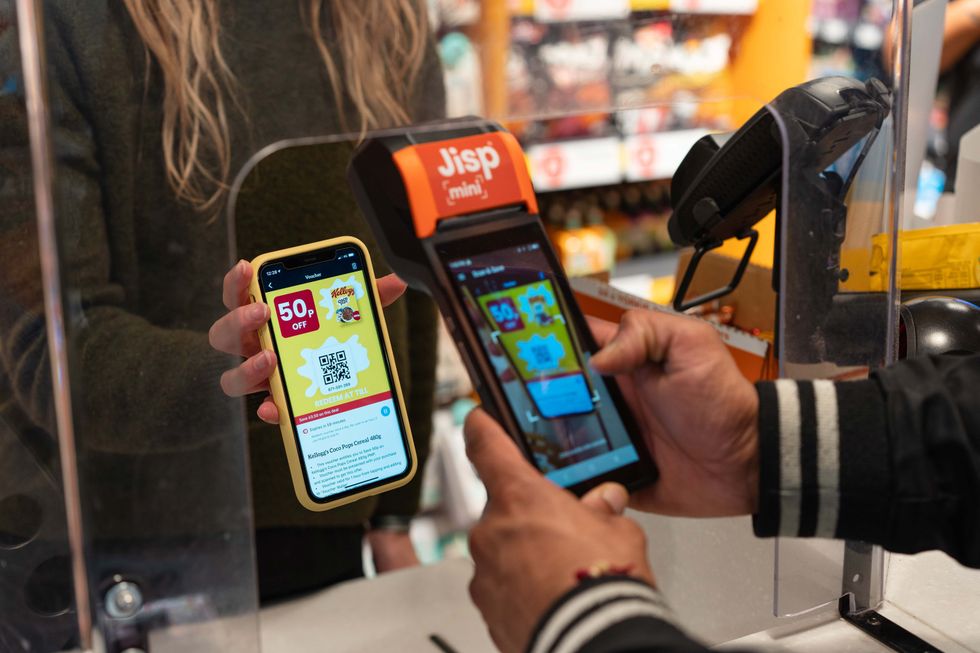
The platform's EPoS-agnostic approach means retailers can implement the service without expensive hardware or complex technical integration. Shoppers simply scan product barcodes using the Jisp app to access exclusive discounts and instant wins, with redemptions validated digitally through the app. This simplicity has proven particularly appealing to time-pressed convenience store operators who lack dedicated marketing resources.
The results speak for themselves. Asif Iqbal from Nisa Local Feltham Road reports: “If there is a wish list then you need to get Jisp on that list. Since we joined Jisp our sales have shot up by about 15 per cent meaning extra profit, it was one of the best decisions we ever made.”
Similarly, Siam Hafeez from Paks Supermarket notes: “We've enjoyed a very fast start to our Scan & Save experience, sales growth was around 17 per cent to begin with but has now jumped to 22 per cent. Our customers love the app and are using it every day and telling their friends, family and even other customers about Scan & Save.”
Beyond simple discounts, Jisp's approach focuses on creating community connections through retailer spotlight campaigns and integration with JispWin, which donates 20 per cent of revenue to local charities through participating stores. This community-building element transforms the rewards experience from a transactional relationship into something that fosters genuine local loyalty.
The locker revolution
Parallel to the rewards revolution, the out-of-home delivery market has experienced explosive growth, with InPost Lockers leading the charge in transforming how consumers send and receive parcels. Paul Selvey, Network Director at InPost UK, notes: “Consumer demand for out-of-home delivery has skyrocketed and the rise of delivery lockers is revolutionising the way we send and receive parcels. There's a massive opportunity for retailers to capitalise on this trend, drive shopper footfall and increase their income.”
Over half of UK consumers have used lockers for online purchases, rising to 71 per cent for Gen Z and 68 per cent for Millennials [Retail Economics, 2024]. These locker users represent a valuable demographic, with 31 per cent having an income over £50,000 and 39 per cent shopping once a week or more. Crucially, nearly two-thirds of InPost Locker users say their visit to a convenience store was more convenient thanks to the locker.
The business model is particularly attractive for independent retailers. Installation and maintenance are handled entirely by InPost, with minimal space requirements and no staff intervention needed. The self-service nature means parcels can be safely collected and sent 24/7, whilst retailers benefit from guaranteed rent payments and increased footfall.
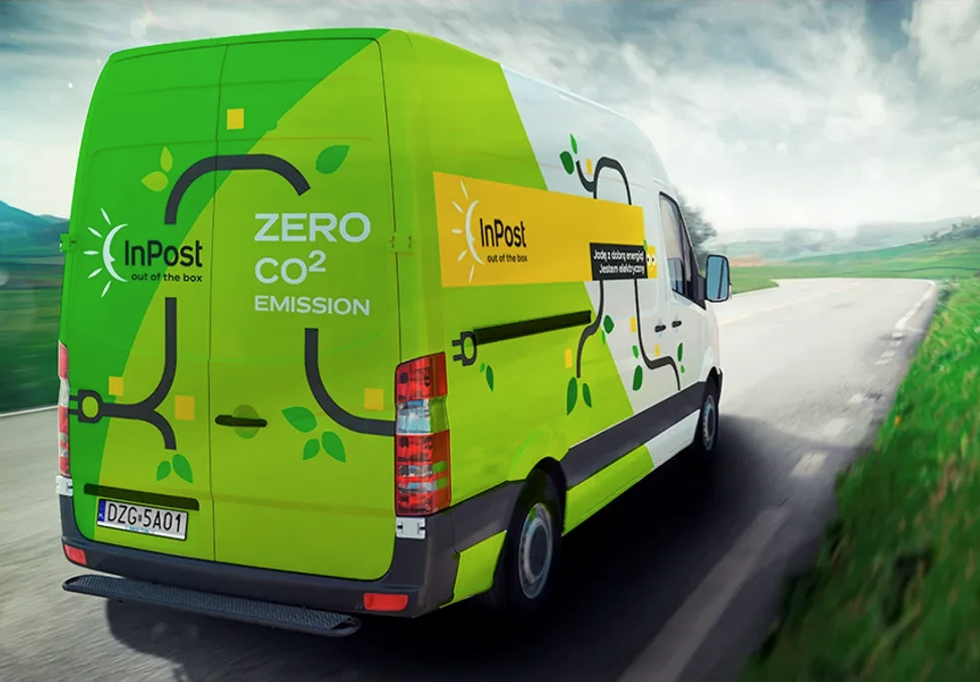
Bay Bashir, owner of Belle Vue Stores North East Ltd in Middlesborough, explains the practical benefits: “InPost Lockers make your store a destination. People that might not already know the store will see it come up as an option when sending a parcel and then your store name is out there. I'd say 25 per cent of people that come to use the locker then come into the store – but it's probably more – so it's a win for everyone.”
The installation process proved straightforward: “The whole installation process was really easy and honestly couldn't have been any better. It only took a day to install the InPost Lockers, and it was all scheduled to ensure minimal disruption to the store, and just ten days later they were fully operational.”
Research shows that 98 per cent of InPost users visit a convenience store because the locker is there, with over half saying it made them more likely to return. Nearly three in four users visit a nearby store before or after using a locker, with a third spending up to £15 during their visit.
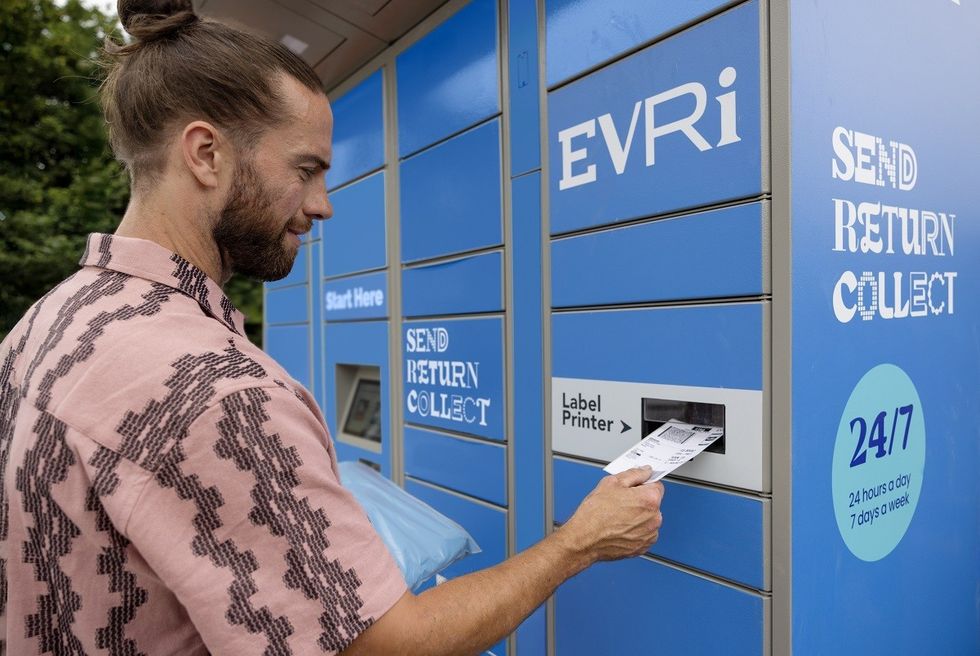
And the sector is gathering momentum. Earlier this month, parcel delivery company Evri has announced an ambitious plan to significantly grow its out of home network by 2030 – more than doubling its network of ParcelShops and lockers to 25,000.
To support this growth, Evri is investing more than £50 million to launch a network of smart lockers that bring dynamic new functionality to the consumer experience. Evri also intends to continue the growth of its ParcelShop network of independent convenience stores.
The announcement follows a 500 per cent year-on-year increase in locker usage, a trend which is anticipated to continue.
“We are committed to offering greater delivery choices for the consumers, retail clients, and businesses that we serve. This major multi-million-pound investment will establish one of the UK’s largest pick-up, drop-off networks as part of our mission to become the UK’s premier parcel delivery business,” Martijn de Lange, Evri Chief Executive, said.
Food waste to footfall
Another facet of the convenience store transformation is addressing food waste through technology, with platforms like Gander leading the way. Stacey Williams, Business Development Director at Gander, explains: “With food prices rising and shoppers increasingly value-driven, platforms like Gander can help independent stores position themselves as affordable, sustainable destinations.”
Gander uses real-time data to highlight reduced-to-clear food items, promoting them across digital channels including social media, retail apps, and local delivery platforms. This visibility can reach thousands of potential customers in the wider vicinity, encouraging drop-in visits from value-seeking shoppers who may not have otherwise considered the store.
The integration with EPOS and inventory systems ensures that stock nearing expiry is surfaced to consumers before it becomes waste. Claire Goddard, Marketing Manager at Pricewatch, testifies: “Gander has been brilliant, and I would urge any retailer looking to change their shoppers' buying patterns to invest in it. It's helped us reduce food waste, become a more sustainable business, and connect with local customers from the comfort of their home.”
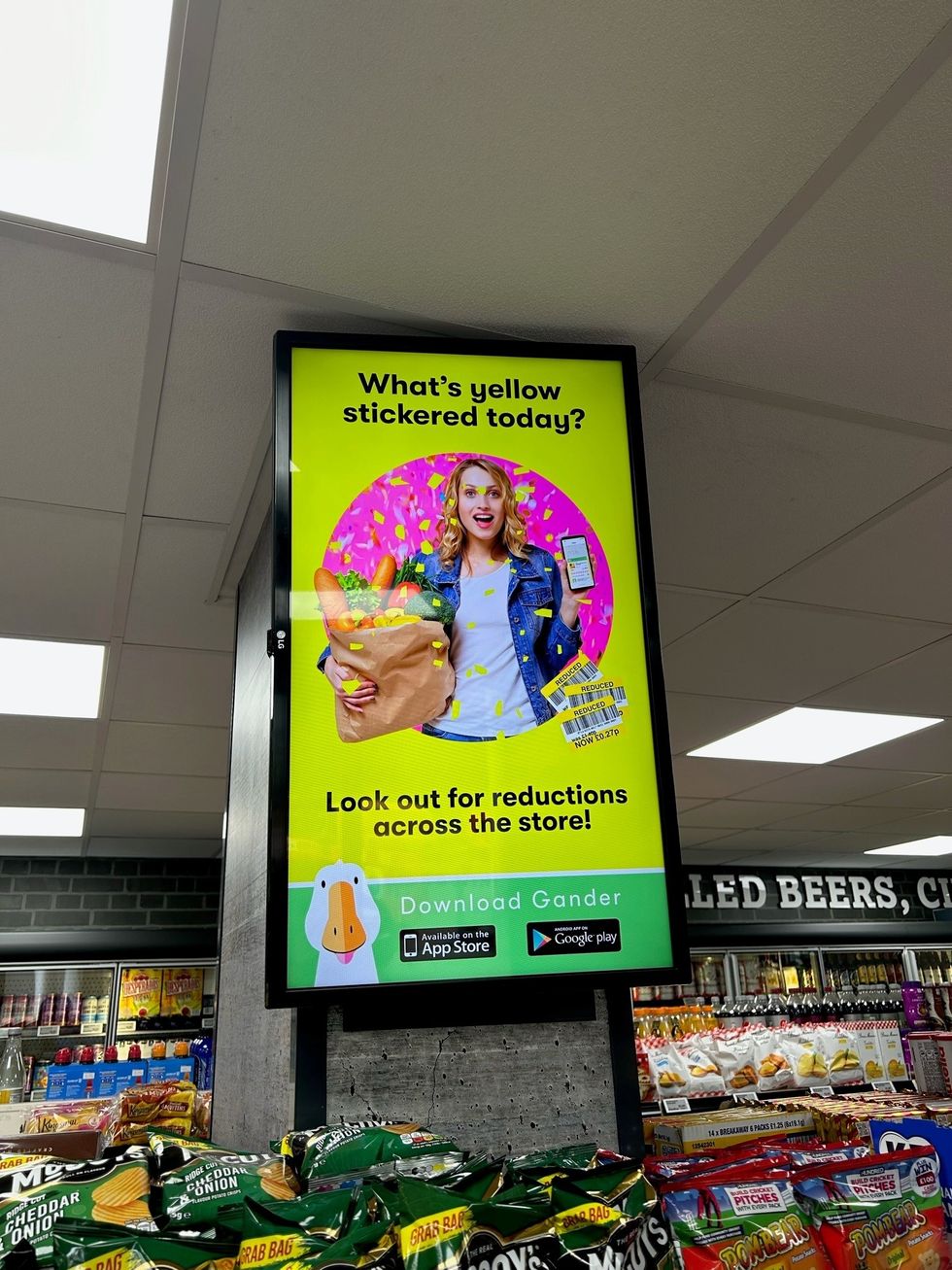
Retailers using Gander have reported up to a 26 per cent reduction in food waste and clearance rates of up to 88 per cent on marked-down stock. Some stores have saved as much as £800 per week in waste-related losses whilst attracting new customers specifically looking for discounted food items.
The partnership between Gander and Snappy Shopper demonstrates the potential for combining waste reduction with delivery growth. In April, Snappy Shopper reported a 14 per cent increase in average basket value across participating stores through its integration with Gander. The partnership allows retailers to list reduced-to-clear items via the Snappy Shopper app, bringing in-store discounts online for the first time.
Mike Callachan, Founder and CEO of Snappy Shopper, describes the impact: “This collaboration not only enhances the convenience shopping experience but also underscores our dedication to reducing food waste and promoting sustainability. By seamlessly integrating Gander's platform into our app, we empower customers to make more informed choices while supporting our retail partners in their sustainability efforts.”
The data shows that 13 per cent of orders at participating stores now include Gander items, with baskets containing Gander products averaging 21 items compared to 14 without. Consumer interest is growing too, with Gander data showing that users save an average of 56 per cent per shop, underlining the platform's dual appeal of helping shoppers stretch their budgets whilst reducing environmental impact.
Maximising food-to-go
The food-to-go market continues to surge across the UK convenience sector, with industry forecasts predicting the market will reach £24bn in value by 2025 [Lumina]. For independent retailers, this presents a golden opportunity to drive footfall, increase basket spend, and significantly boost margins through carefully curated hot food offerings, premium coffee solutions, and innovative meal deals.
Phil Carratt, Head of Marketing and Strategy at Country Choice, identifies several key trends shaping the food-to-go landscape. “Food to go is following the general trend towards hotter and spicier flavour profiles, vegan and vegetarian options continue to be an area of growth. However, more recently, the spotlight has fallen upon gluten and allergen free options,” he explains.
The personalisation trend remains paramount, with consumers increasingly expecting to customise their orders. “Personalisation remains big, with consumers wanting to customise their food to go order by being able to choose their own bread, toppings, and sauces. Our experience tells us that retailers who offer this option are much more likely to see consumers become regular customers,” Carratt notes.
Meal deals are evolving beyond traditional sandwich-and-drink combinations, becoming more sophisticated and targeted. “Meal deals involving sandwiches and hot snacks - often paired with a tea, coffee or soft drink - are commonplace, but they are becoming more targeted. For example, there are now meal deals specifically aimed at health-conscious consumers, as well as families. In addition, retailers are experimenting with different types of meal deals including those that feature hot food items such as soup, pasta, and jacket potatoes,” Carratt adds.
Coffee and hot food investment
At James Hall & Co. Ltd, which operates as the primary wholesaler to SPAR retailers throughout the North of England, the emphasis is firmly on coffee and hot food as profit drivers. Peter Dewhurst, Fresh Food & Food To Go Sales Manager, advocates for retailers to embrace these categories as essential components of a successful food-to-go strategy.
“At James Hall & Co. Ltd, we are encouraging SPAR independent retailers to embrace key current trends in Food To Go including the importance of having coffee in your offer and the growing significance of hot food in the category,” says Dewhurst.

The company's proprietary brands, Cheeky Coffee and Clayton Park Bakery, offer retailers exceptional margins that are “hard to match” elsewhere in the convenience retail market.
“By adding Cheeky Coffee to your store offer, it will take up minimal store footprint and it will deliver your most profitable store category. Best of all, payback on investing in the brand has been as quick as nine months with some of our retailers,” Dewhurst reveals.
Hot food presents equally attractive returns. “It is a daily footfall driver as the products are for immediate consumption and everybody needs a breakfast and a lunch. Return on investment here is generally very quick too between 12 and 18 months,” he explains.
Solutions for every sized store
Country Choice has developed a comprehensive range of solutions to accommodate retailers regardless of store size, available space, or staff expertise. “Our equipment solutions range from compact countertop 'hot spots' to freestanding counters, and a host of options in between,” Carratt explains.
The company's approach minimises financial risk for retailers by providing comprehensive support packages. “We provide all that a store requires to set-up a food-to-go offer including products, training, free on loan equipment (based on minimum spend) and marketing. We deliberately keep set-up costs to a minimum to reduce the risk for the retailer,” he adds.
For SPAR retailers working with James Hall & Co. Ltd, the Harvest scheme provides additional financial support. “By joining SPAR through James Hall & Co. Ltd, independent retailers automatically qualify for our Harvest scheme from day one which accrues funds for store equipment on a percentage basis to reward retailers for wholesale orders placed. This eases the cost of investment when it comes to keeping your store offer relevant to 21st century convenience shoppers,” Dewhurst notes.
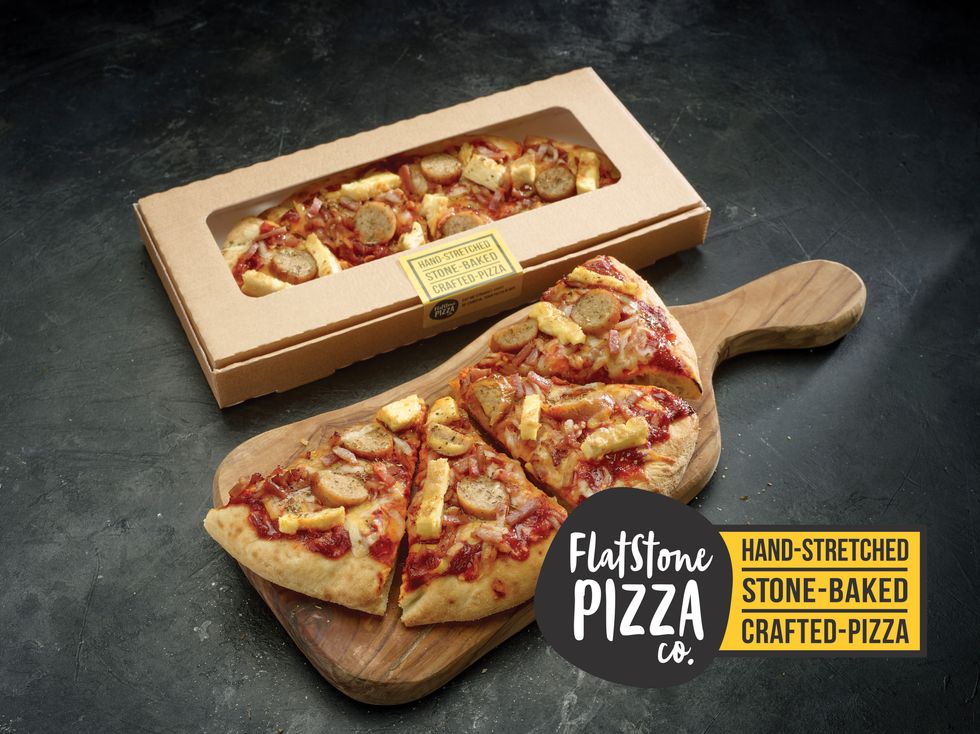
Effective waste management is crucial to food-to-go profitability. Country Choice emphasises the importance of strategic production planning aligned with customer flow patterns. “Production planning is key to both growth and waste control. Shelf life must also be considered, especially with regards to hot food to go where holding times are often limited to two to four hours. When it comes to bake-off, little and often is the key, and retailers should aim to keep waste below 8 per cent,” Carratt advises.
The key to success lies in synchronising production with store footfall. “Effective production and labour management are crucial to combat food waste and ensure product freshness. Planning should align with the store's footfall and peak trading times, as this will ensure that products are readily available during these periods, rather than being in the oven which can lead to waste,” he explains.
Both Country Choice and James Hall & Co. Ltd offer comprehensive training and ongoing support to help retailers optimise their operations. James Hall & Co. Ltd provides “a dedicated Food To Go team with a proven track record of delivering improved sales and profitability that supports retailers with training, stock management, and reducing food waste.”
Innovating the supply chain
The food-to-go sector is witnessing significant innovation from suppliers eager to capitalise on market growth. Rollover has recently expanded beyond its famous hotdog offering with five new products including Bacon & Sausage Baguettes, Sausage Egg & Cheese Muffins, and Boneless Chicken Wings. Rich's has launched a thaw-and-serve bakery range specifically for convenience stores, whilst Delice de France has introduced both a ready-made bakery service for London outlets and a comprehensive coffee-to-go concept offering 40 per cent margins.
Kepak Foods Division has launched “Grab a Bite”, a new frozen range designed for 24/7 operations with minimal labour requirements, whilst Around Noon has invested £50 million in a new manufacturing facility to meet growing demand. These developments demonstrate the industry's confidence in the continued growth of food-to-go within the convenience sector.
The future is now
These services represent more than individual solutions; they embody a shift towards a more connected, efficient, and sustainable convenience retail ecosystem. As consumer expectations continue to evolve, the retailers who embrace these integrated solutions will be best positioned to thrive in an increasingly competitive marketplace. The technology exists, the business models are proven, and the customer demand is clear. The only question is how quickly retailers will adapt to this new reality.

